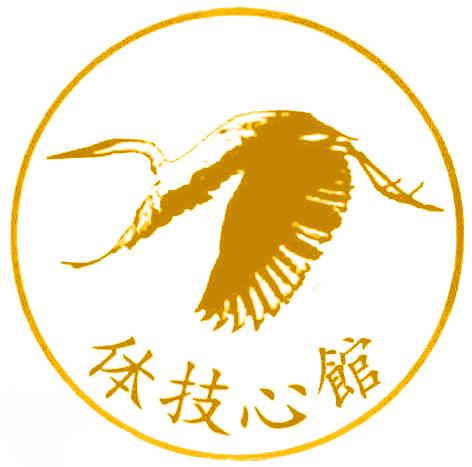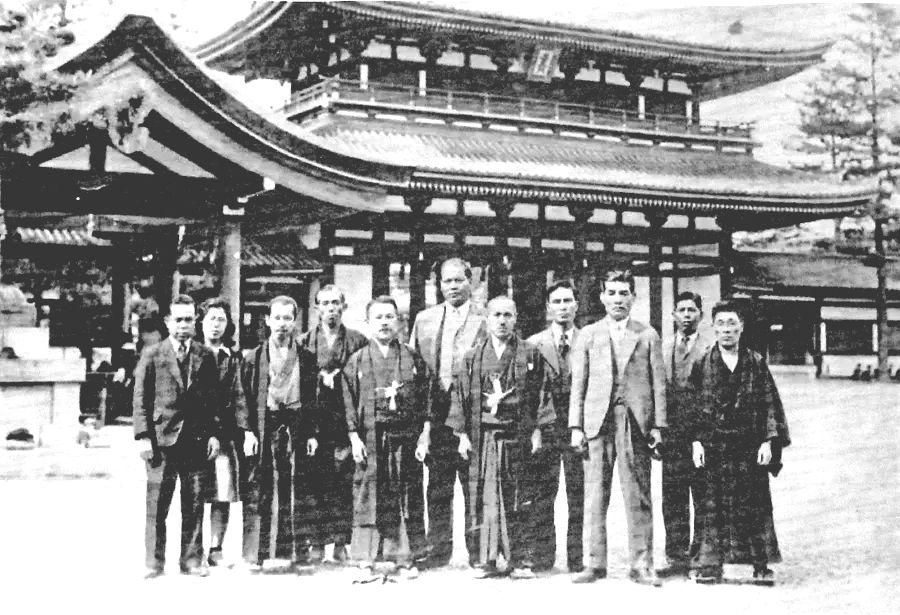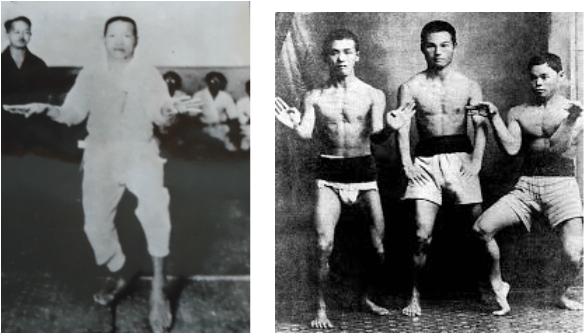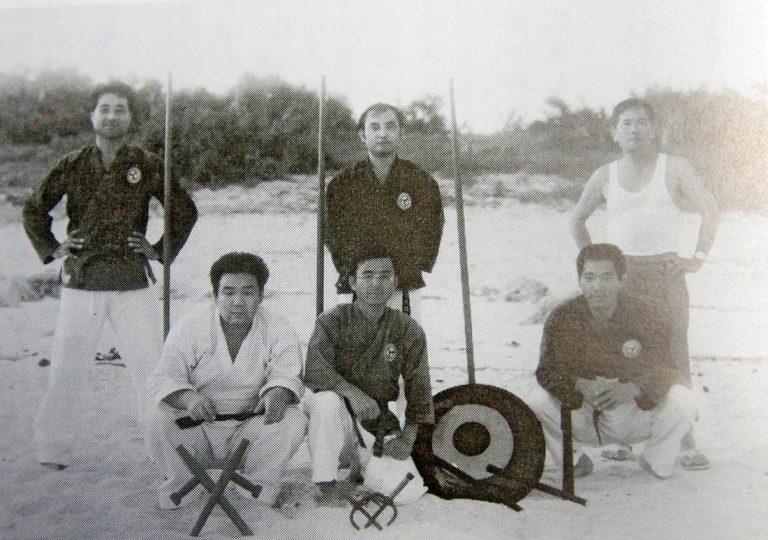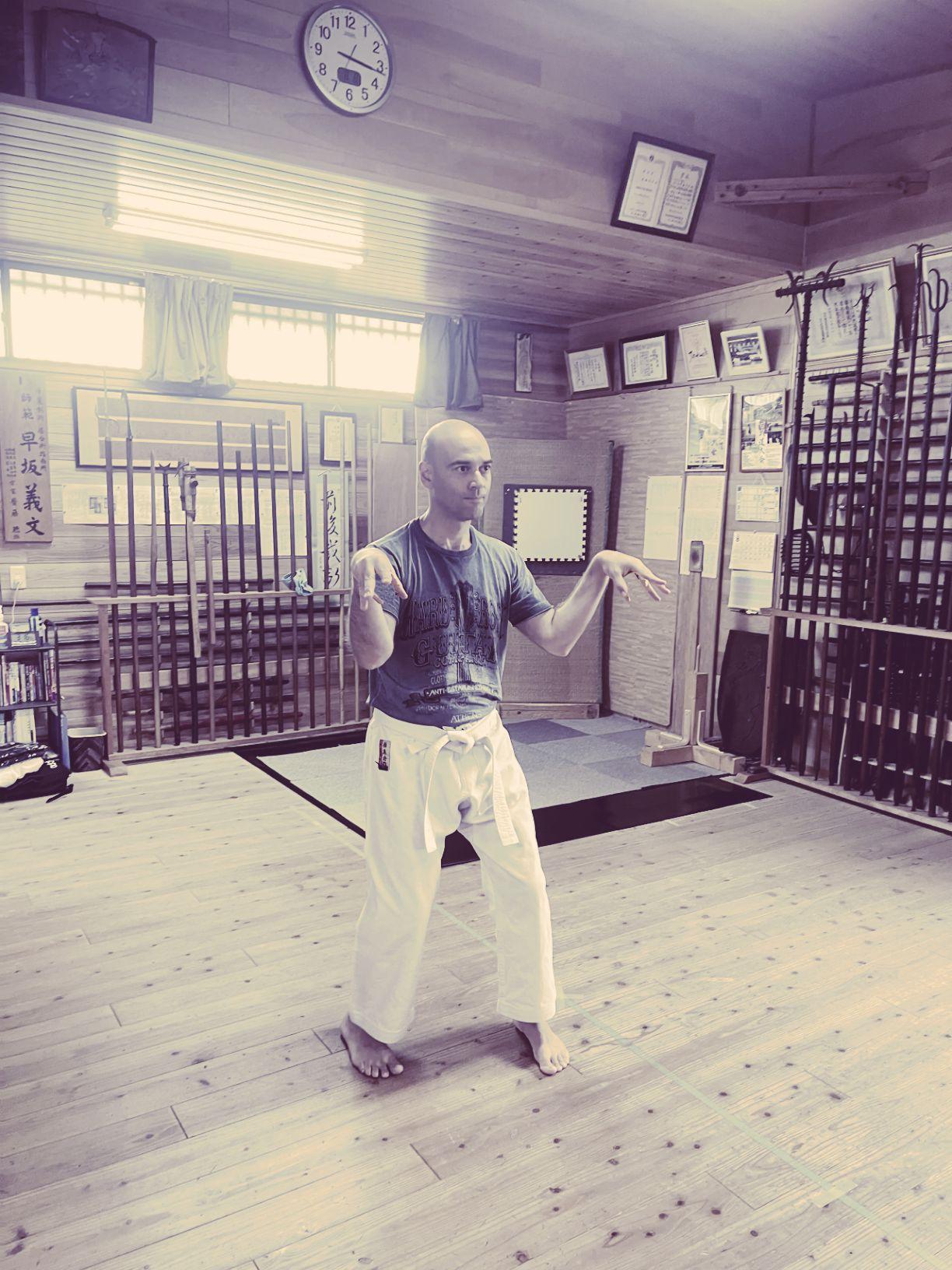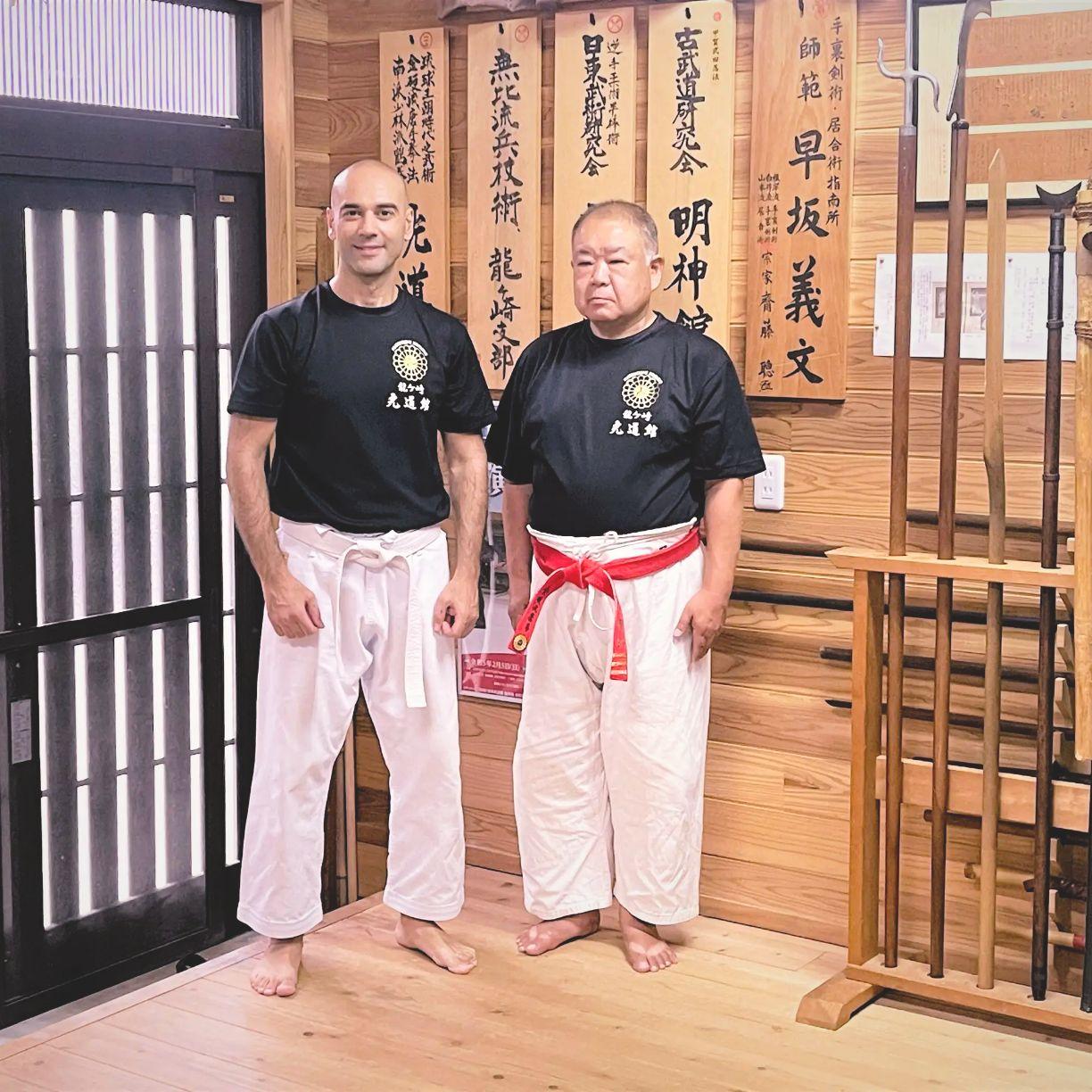MATAYOSHI KINGAI-RYU TODE • RYUKYU KOBUJUTSU
HISTORICAL PILLS
* It is from this character that all the male children of the Ma family (麻), regardless of the branch (Matayoshi, Gima, Sawada…) took Shin (眞 or 真) as the first kanji of their name.
the man who would later be famous in Okinawa as Go Kenki, and taught him Shaolin Bai He Quan (Fuzhou Shaolin White Crane Fist). Furthermore, always thanks to Wu's introduction, from
Kin Koronushi (later called Kingai Laoshi) he learned tinbei-jutsu, shuruchin-jutsu and nunti-jutsu, as well as Chinese acupuncture and the Shaolin Kung Fu of the Southern School which included: Arhat Boxing, Crane, Tiger, Mantis, Monkey and Drunkard. After a long period of training in martial arts on the mainland, Shinko returned to Naha to trade and teach martial arts. Upon his death, the fighting arts in which Shinko had trained incessantly were passed on to his son Shinpo; it was Shinpo who gave the name Kingairyu to the family fighting method.
MATAYOSHI SHINPO (16th generation, 1921-1997) began training under his father at the age of four, then at the age of seven he was also introduced to Chotoku Kyan, for a short time to Chojun Miyagi and then to Seiko Higa, who was considered by Shinpo as a second father. In 1935 he also began training under Go Kenki* himself, instructing until 1957 when he had to move to Kawasaki to look for work. Returning to Okinawa in 1960, he began teaching kobudo at Higa Sensei's dojo, also becoming a member of the federation he had established.
In 1970 he founded the Ryukyu Kobudo Renmei with the intention of giving kobudo the same value and diffusion that karate was experiencing at that time; two years later, the Renmei received registration under the Dai Nippon Butoku Kai, from there he began the structuring of the kobudo system that later spread worldwide.
In 1976 he built his own dojo and named it Kodokan in honor of his father, from then on he worked extensively for the preservation and dissemination of Okinawan martial arts, also becoming a member of various local organizations.
Now the Matayoshi Kodokan honbu and organization are under the manage of Matayoshi Yasushi (son of Shinpo).
